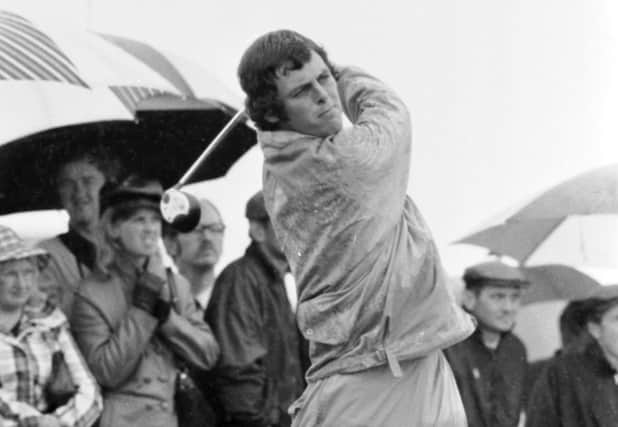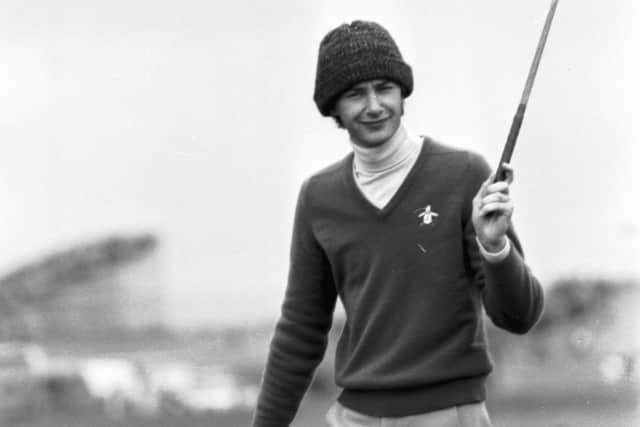Bernard Gallacher and Ken Brown take a nostalgic look at golf’s UK swing


The European Tour’s plan to restart the 2020 season with a six-event UK Swing in July and August has taken Bernard Gallacher and Ken Brown on a journey back in time over the past week.
“It’s like the old days,” declared Gallacher, the 1995 Ryder Cup-winning captain, of the circuit aiming to get back up and running with a series of tournaments in England and Wales after being shut down since early March due to the coronavirus crisis.
Advertisement
Hide AdAdvertisement
Hide AdStarting with the Betfred British Masters at Close House near Newcastle, the run is also set to take in visits to Forest of Arden, Hanbury Manor, Celtic Manor for a double-header and, finally, The Belfry.


The new UK Swing has been created to give the tour the best possible chance of creating a “bubble” at events when it rolls out a health strategy that is costing more than £2 million.
Nowadays, UK and Irish players on the European Tour are likely to play more events in the Middle East in a normal season than on home soil, but that wasn’t the case when the likes of Scottish duo Gallacher and Brown held cards.
In the European Tour’s inaugural season in 1972, the schedule contained no fewer than 13 events in the UK and Ireland, the venues visited including Hillside, Woodbrook, Fulford, Wentworth and, in Scotland, Downfield, Dalmahoy and Turnberry.
“It was still a British tour, essentially, back then,” added Gallacher, who landed early wins in his professional career at Moor Park in Hertfordshire, Ashburnham in south Wales and Royal Norwich in Norfolk.
“The first tournament I played after turning professional was at Dunbar in the 1968 PGA Championship and the following week we went to Maesdu Golf Club in Llandudno, which was another nice course.”
Three of Brown’s four European Tour triumphs were recorded in the UK and Ireland before the circuit started to spread its wings. His breakthrough came in the 1978 Caroll’s Irish Open at Portmarnock and he then added the Glasgow Open six years later at Haggs Castle and the Four Stars Pro-Celebrity event at Moor Park in 1985.
“We used to zip round the UK,” recalled five-time Ryder Cupper Brown. “I think some years there must have been 15 tournaments in Britain and Ireland. There was a certain advantage to it as the leading players didn’t have as many options as they do now, so all the leading players basically played in all the tournaments, meaning that Seve [Ballesteros], [Nick] Faldo and Sandy [Lyle] teed up in most of them.
Advertisement
Hide AdAdvertisement
Hide Ad“The PGA Championship (held at Wentworth since 1984) was always good because, in those days, it used to go around the country,” added Brown, who finished runner-up in that four times in a six-year spell that took in visits to Royal Birkdale, St Andrews, Royal St George’s, Ganton, Hillside and back to Royal St George’s.
“There were lots of small ones as well. Lawrence Batley, for instance, hosted a lovely tournament at Bingley St Ives in Bradford, while I also remember playing at Wenvoe Castle in Wales. These courses aren’t long enough for the players to compete on now, they’d be too short, unfortunately.
“Lots of those are eliminated now, including the Sunningdales of the world. It was marvellous, really, and, in the old days, tournaments finished on the Saturday, so you’d drive home on the Saturday night on a regular basis.”
In what Keith Pelley, the circuit’s chief executive, described as a “little bit of a glimpse of the future” in terms of how the schedule could be mapped out, all the venues in the new UK Swing are within a three-hour drive of one another. Gallacher added: “I spoke to my nephew Stephen and he said he’d be going in his own car to all these tournaments.
“At least the roads are better these days – it was quite difficult driving around Britain on dual carriageways – and, of course we didn’t have Sat Nav back then!
“It is really quite nostalgic thinking about this new UK swing because I remember playing in events in Scotland at Dunbar, Royal Burgess and Dalmahoy, then driving south to play at clubs in the London area and the Midlands as well.”
The “bubble” plan includes players, caddies and support staff all staying in the same hotel, which will be on site at every event except the British Masters.
“It will be good for camaraderie, which is there already but not really like in our day, when we used to travel together on a bus,” said Brown. “The tour was very different back then. The players were together much more often. Now, when they finish, they zoom away on their own plane or fancy car.”
Advertisement
Hide AdAdvertisement
Hide AdOf the six events, Gallacher is particularly keen to see The Belfry stage the UK Championship. “We’ve missed playing there. It’s got great history with the Ryder Cup and other tournaments as well and I am sure people will be amazed to see how much it has matured,” he said.
A message from the Editor:
Thank you for reading this story on our website. While I have your attention, I also have an important request to make of you.
With the coronavirus lockdown having a major impact on many of our advertisers - and consequently the revenue we receive - we are more reliant than ever on you taking out a digital subscription.
Subscribe to scotsman.com and enjoy unlimited access to Scottish news and information online and on our app. With a digital subscription, you can read more than 5 articles, see fewer ads, enjoy faster load times, and get access to exclusive newsletters and content. Visit https://www.scotsman.com/subscriptions now to sign up.
Our journalism costs money and we rely on advertising, print and digital revenues to help to support them. By supporting us, we are able to support you in providing trusted, fact-checked content for this website.
Joy Yates
Editorial Director
Comments
Want to join the conversation? Please or to comment on this article.
